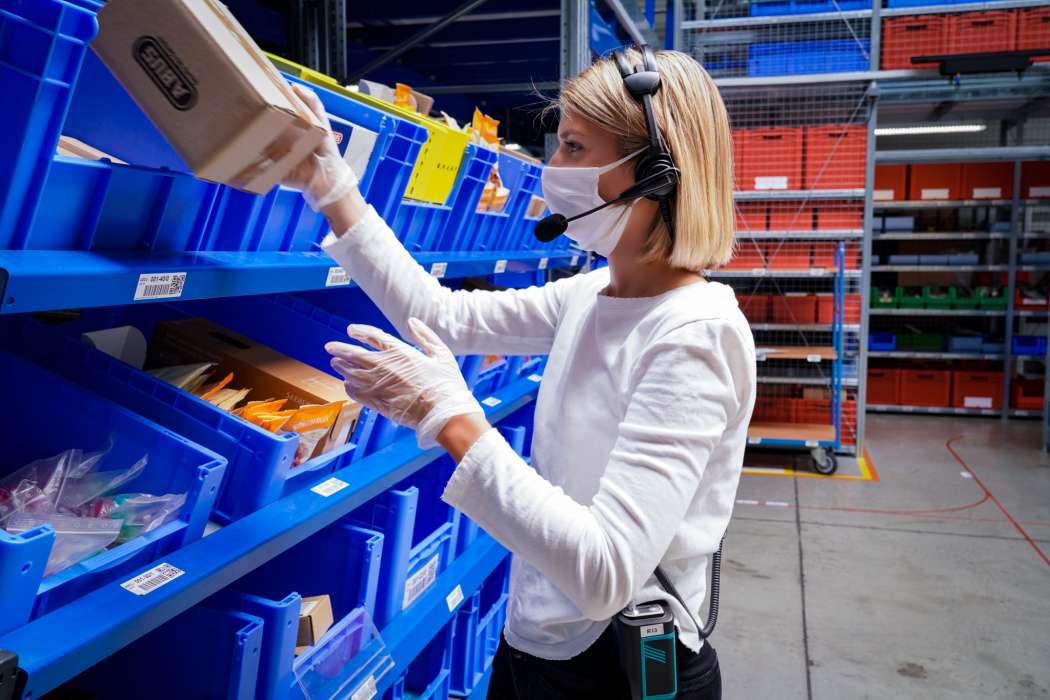The Biggest Problem of E-Commerce Logistics: Picking
Logistics firms combine technology, productivity tools, expertise, and employee experience to successfully manage the process of getting items to...
4 min read
Işık Handan : Jan 26, 2022 3:54:29 PM
You may achieve digital transformation in manufacturing by combining old production methods with new technologies and incorporating them into every step of the process.
Improved quality control, substantial productivity improvements, and a better product with lower prices and better environmental controls are all benefits of digital transformation. It is transforming every area of manufacturing, giving manufacturers significant advantages over their competitors and the changing environment.
Organizations that go through digital transformation reap a slew of rewards. There are ecological and sustainability benefits in addition to financial and corporate rewards, making the change necessary to remain competitive on the market.
Today we are giving you the newest top 3 digital transformation technology, their benefits, and which one would suit your business perfectly.
Pick-by-voice technology presents the information from logistics to warehouse workers using normal language. This technology, also known as pick to voice or voice-directed storage, is paperless and eliminates the need for employees to engage with the system with their hands or eyes.
Pickers use headsets with industrial microphones in practice. The mic is connected to a mobile computer that supports a speech program that directs warehouse workers to where they need to go and what they need to select. Pickers identify a code, and the system validates the selecting location and item using voice recognition software.
The voice program corrects the picker if the spoken information is wrong. Supporting technologies, including such barcode scanners or radio frequency identification (RFID) devices, may be used in voice-directed applications.
Outside of a warehouse, voice picking can be employed on production lines and in storefronts. In a retail store, for example, a voice picking operator could use a headset to receive spoken instructions and pick components of a retail order, verifying each item as they locate it. When the order's final item is selected, the system will give the picker information on how to complete the operation, such as dropping off the finished order at a delivery site.
Pick-by-light is a sort of order fulfillment technology that aims to boost picking performance and reliability while cutting labor expenses. Pick-by-light is unique in that it is paperless, relying instead on alphanumeric displays and switches at storage sites to guide your personnel through light-assisted manual selecting, putting, sorting, and constructing.
Additional options may be available depending on the pick-to-light system. Pick-to-light often includes an affirmation button and a digital display in addition to the LED display, allowing for more written specifications and options. Employees may be able to record basic data, such as changes in pick size, in your chosen system; other systems may specify particular directions, order numbers, zone directives, and other information.
There are three light-based general systems:
Put-to-light is basically the opposite of a pick-by-light method: simply change the direction, and then the put-to-light system will assist technicians to organize incoming items in a retail store, whether grouped as a customer demand or organized in any other way.
At high densities, either pick-by-light or put-to-light methods function best. Because the units are moved more frequently in high-density regions, they, therefore, provide a better return on investment. The operator can identify the relevant item faster thanks to the clear artificial lighting.
Before deploying pick-by-light in your warehouse, consider the following factors:
New Hires/Regular Turnover: Because many warehouses are seasonal, they must hire temporary staff and have a high turnover rate. It takes time and effort to train new personnel, and it gets expensive. A light-based picking approach is simpler to teach and learn for almost everyone.
Number of SKUs: number of SKUs: It's possible that having few or no items and picking to light isn't essential. Different technology may be required to increase performance in really big warehouses with thousands of SKUs.
Present System Performance: If your existing system isn't throwing money away and is accurate, a change might not be necessary. Pick to light is viable if you can take advantage of lower labor expenses and shrinkage.
Storage Units That Are Currently Appropriate: If converting from pick to light necessitates replacing a big amount of equipment, there could be a significant cost. Before moving further, all of these will need to be assessed.
The quantity of pick faces, amount of pickers, and the total distance between picks all play a role in determining which picking method is best for your organization.
Other factors to consider are the volume of re-slotting required and the customer’s tolerance for faults:
However, because PBL is a more complicated subject, the initial start-up investment and cost structure can be much more than for PBV. PBL modules are typically installed in fixed sites and would cost substantially more if deployed in huge numbers over a vast area.
Voice technology will definitely be a better fit if the select locations are continually being modified. This is why it is more adaptable, requiring only labeling, file systems, and WMS updates for reconfiguration. Reconfiguring a PBL module, on the other hand, may necessitate additional changes to the PBL software, the light displays, the connectivity backbone, the storage devices media, and the WMS.

Logistics firms combine technology, productivity tools, expertise, and employee experience to successfully manage the process of getting items to...

What is IoT? The Internet of Things (IoT) is a new network architecture that uses software to connect physical resources and people.

The promise of sustainability is a liveable future wherein the continuity of production and progress is ensured. And whether the sustainability...